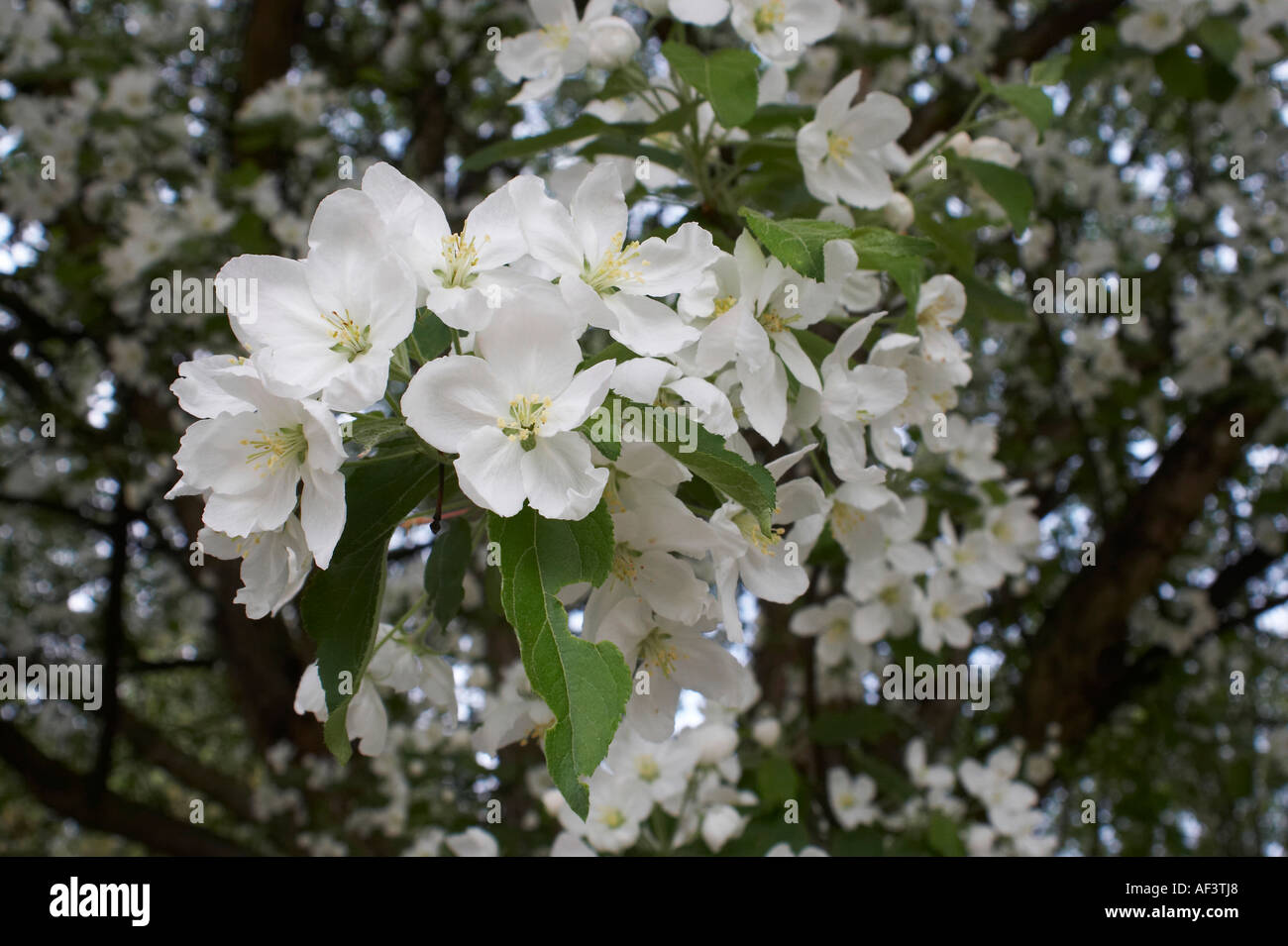Rosaceae. Malus-Hupehensis. Hybride

Image details
Contributor:
Piotr & Irena Kolasa / Alamy Stock PhotoImage ID:
AF3TJ8File size:
52.6 MB (1.4 MB Compressed download)Releases:
Model - no | Property - noDo I need a release?Dimensions:
5256 x 3498 px | 44.5 x 29.6 cm | 17.5 x 11.7 inches | 300dpiMore information:
Malus, the apples, is a genus of about 30-35 species of small deciduous trees or shrubs in the family Rosaceae, including most importantly the domesticated Orchard or Table Apple (M. domestica, derived from M. sieversii). The other species are generally known as "wild apples", "crab apples", "crabapples" or "crabs", this name being derived from their small and sour, unpalatable fruit. The genus is native to the temperate zone of the Northern Hemisphere, in Europe, Asia and North America. Apple trees are small, typically 4-12 m tall at maturity, with a dense, twiggy crown. The leaves are 3-10 cm long, alternate, simple, with a serrated margin. The flowers are borne in corymbs, and have five petals, which may be white, pink or red, and are perfect, with usually red stamens that produce copious pollen, and an inferior ovary; flowering occurs in the spring after 50-80 growing degree days. Apples require cross-pollination between individuals by insects (typically bees, which freely visit the flowers, for both nectar and pollen); all are self-sterile, and self-pollination is impossible making pollinating insects essential. The honeybee is the most effective pollinator of apples. Malus species, including domestic apples, hybridize freely. Malus species are used as food plants by the larvae of a large number of Lepidoptera species - see list of Lepidoptera which feed on Malus. The fruit is a globose pome, varying in size from 1-4 cm diameter in most of the wild species, to 6 cm in M. pumila, 8 cm in M. sieversii, and even larger in cultivated orchard apples. The centre of the fruit contains five carpels arranged star-like, each containing one to two (rarely three) seeds. One species, Malus trilobata from southwest Asia, has three- to seven- lobed leaves (superficially resembling a maple leaf) and with several structural differences in the fruit; it is often treated in a genus of its own, as Eriolobus trilobatus.